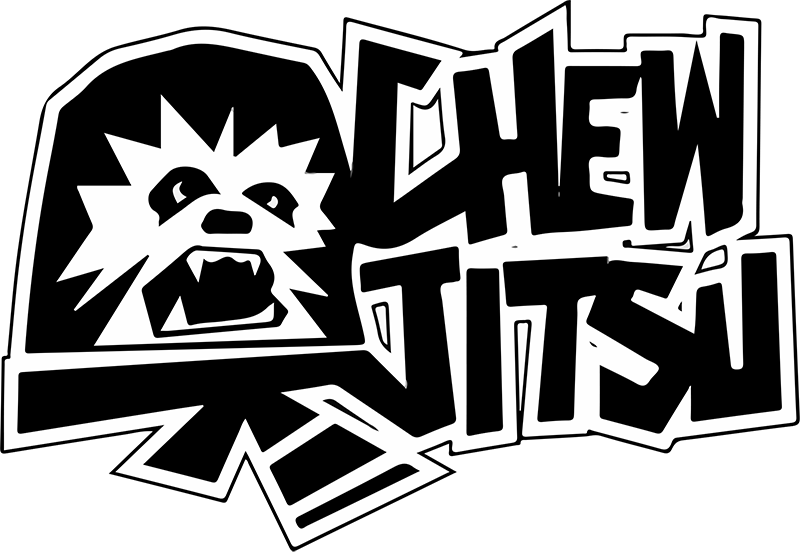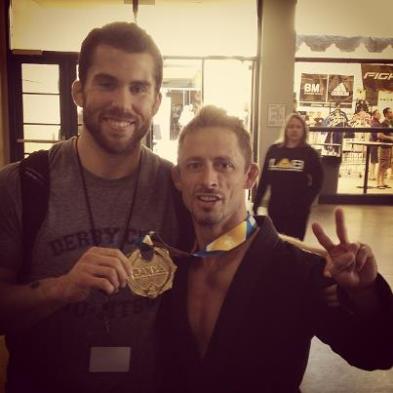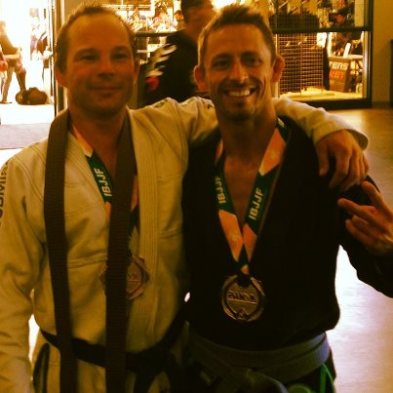I wrote previously about restrictive rolling with a partner of lesser skill. Now let’s look at restrictive rolling with a partner or similar or higher skill. It’s essentially the same thing. . . only better. Again, all this really means is rolling with a definite goal against someone who is as good or better than you by restricting yourself to a select group of techniques and positions you wish to improve upon.
Seems pretty simple right? It is. . . sort of.
In theory, taking techniques that you aren’t incredibly familiar with and trying them out during rolling is simple. Rolling this way is rather easy with people that you out match. You can try and go for a move and if you expose yourself you can simply recover and control the situation again. However, against a person of similar skill, if you make a mistake they may submit or out position you. Combine the competitive nature of BJJ and the competitive nature of most people, and the thought of “losing” can hinder someone from opening up. But taking risks, getting out of your comfort zone and opening up are all things that you need to do in order to improve your game, so forget about “losing” when rolling this way.
Now, you don’t have to tell your partner you are working on anything in particular. Just roll with them and try to go after the techniques and positions that you are focusing on. This will be a bit stressful on your body since you will be against an opponent who is better equipped to deal with whatever you’re working on. Often, when using a new set of techniques you will find yourself having to muscle through it, or because of unfamiliarity, you will be more exhausted than usual. This is caused by both your body’s lack of efficiency with the movements and the stress brought on by engaging with a skilled opponent. Because you cannot consider a move fully implemented until you can perform it under high pressure situations, the sooner you start attempting new moves against higher level guys, the better.
Rolling this way will also have the side benefit of creating scrambles and at times leaving you in a less desirable position. By doing this you will be forced to become better at scrambling which is important (ever roll with a good wrestler?), and it will push you to work out of bad positions, effectively improving your defensive abilities. Just be sure to figure out the mistakes or weakness of the move that allowed you to end up in those positions and correct them.
Finally, if you should use the techniques against a higher belt level and they successfully defend or counter them. Don’t be afraid to ask them what they did or what you could have done. Don’t ask them in the middle of the roll or anything, but grab them after class and just ask about what happened during the roll and if there is anything you might be able to improve upon. I have yet to meet a BJJ practitioner / instructor unwilling to share a tip here and there.
Again, what I am writing about isn’t some sort of secret way to get better. The idea is simple and effective, but implementation can be difficult because you will be forced out of your comfort zone. That being said, the sooner you lose the fear and experiment, the sooner your game will grow.
Benefits of Restrictive Rolling with people of similar skill
- Helps improve your defensive techniques and scrambling ability since you may lose positioning while trying to perform the newer techniques.
- Gives you more exposure on the techniques you’re perfecting in a live setting.
- Helps you find new ways to get the same techniques or positions.
- If you are going against someone of a higher level they may be able to give you helpful tips on what you’re working on.
- Breaks training plateaus by giving you clear goals to achieve
- Hitting a newly added move on a person who’s game you respect is a huge confidence booster.


